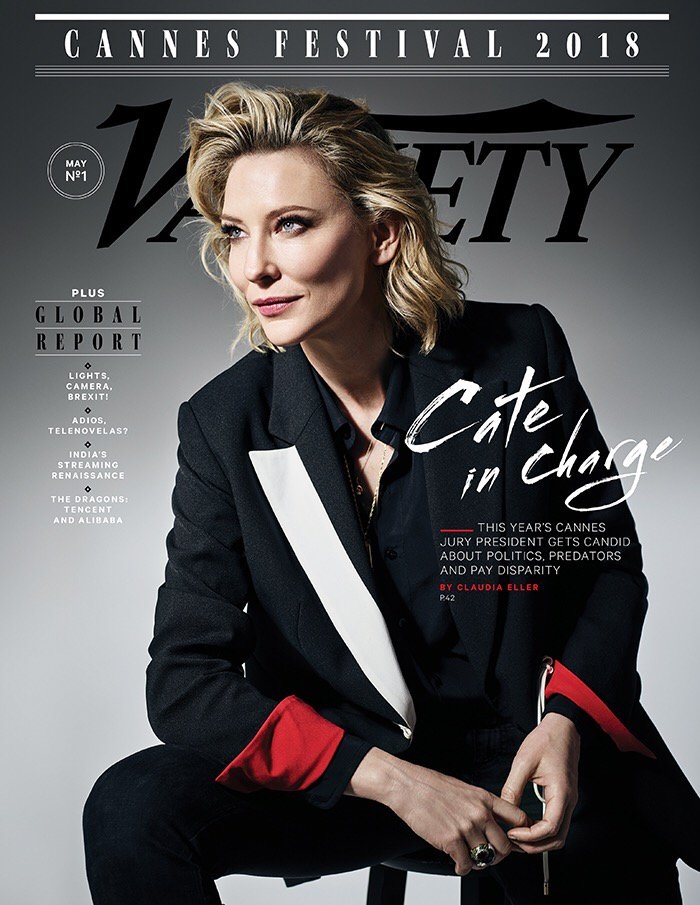How are the elements of mise-en-scene used to create meaning of the Variety front cover?
The elements of mise-en-scene are used to show the representation of gender on the Variety front cover. By using a darker colour palette throughout the cover, the traditional ‘feminine’ colour palette is replaced with the use of colours such as red white and black. Sticking to the dark colours, the costume used in the cover is a black suit with small sections of both white and red. By using the suit, the costume moves away from the feminine aspect of things and is replaced with a more masculine one, the choice of ring is also significant as it is a big, heavy ring compared to a light, delicate one. The choice of the suit jackets also shows contrast with traditional women’s outfits, as we would expect to see a glamorous dress on a female model. The use of make-up on Cate is very minimalistic, with her hair swept back out of her face portraying a high power status and again reflecting the masculinity of the whole cover. The use of the studio setting allows the audience to focus on Cate alone as there is nothing else to focus on. The use of the slightly low shot shows Cate in a position of power compared to the audience as she is seen ‘higher up’ than them, her gaze being away from the camera suggests that she is focused. The use of the high intensity of lighting on her face highlights that her beauty is still shown through all the masculinity presented within. The elements of mise-en-scene show that despite the main aspects of the cover being masculine, there is still feminine beauty shown despite this.

No comments:
Post a Comment